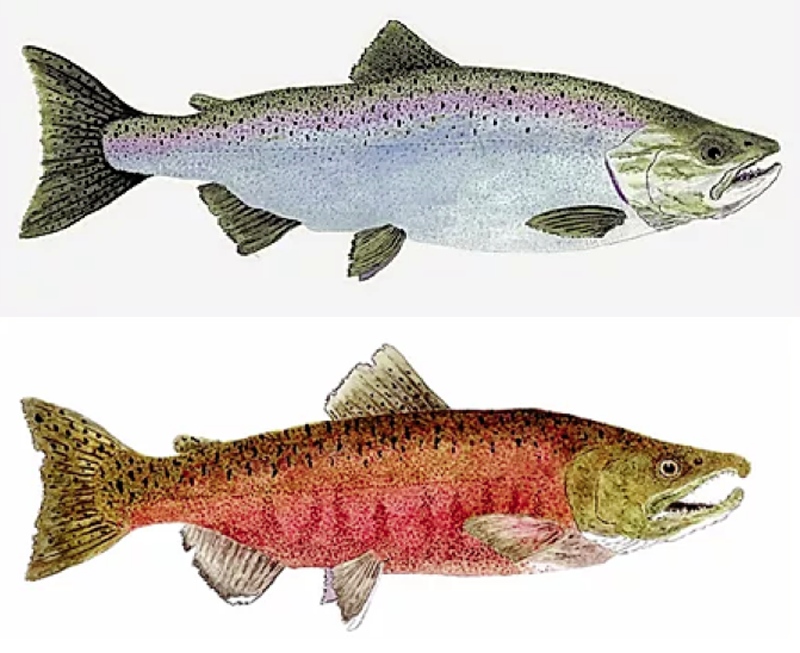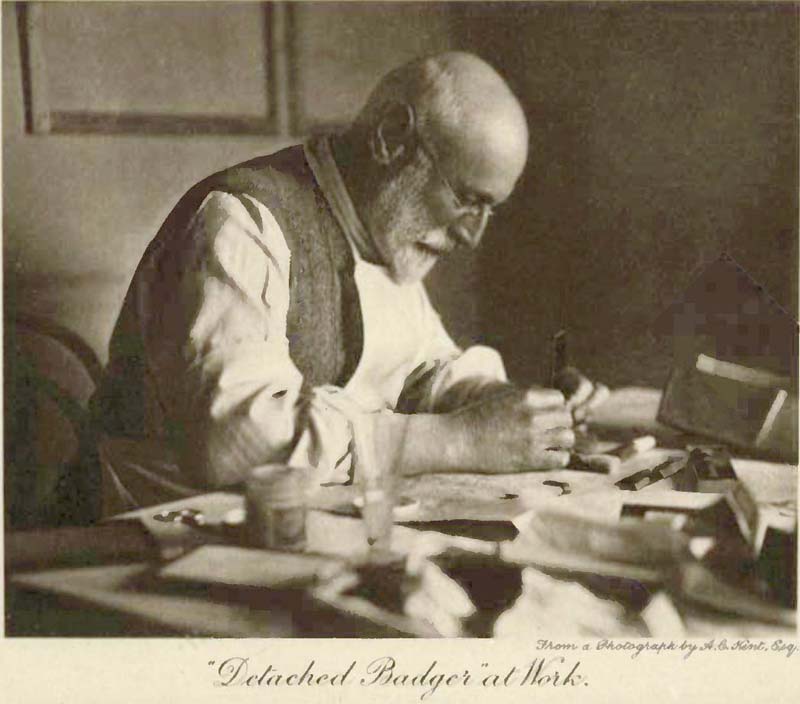
IGFA Tippet Class World Record [71 lb 8 oz] Rogue River, Oregon – October, 2002. Above image, Chinook salmon fresh from the ocean [commissioned work]. Below, Chinook in spawning colors. Illustrations by world-renowned watercolorist, Thom Glace – used with permission.
Knots for big fish
By Skip Clement, publisher
The Bimini Twist Knot [unsupported belief is that a Venezuelan fishing captain invented it], and its allied companion knot, the No Name Knot, aka Bristol Knot, or Mexican Mate Knot, are feared by Land Lubbers for being difficult to tie. But both knots are much easier to tie than a Blood Knot.
Why tie a Bimini?
The Bimini Twist is primarily an offshore trolling knot and origin of a double-line leader. It creates a loop at the end of the line which is secured at the top with a long barrel of the coiled line created by the tying process. Its rarity is that it does not weaken the line that ties it.
Doubling your fishing line prevents abrading – creates a loop to attach a wind-on leader without diminishing the strength of the mainline. A Bimini Twist loop is stronger than the line itself
Most seasoned anglers use between 20-30 initial twists in nylon monofilament and 60 or more initial-twists in braided line. Lesser wraps fail, like 10-12 with mono.
What about the No Name Knot
From the loop created in the Bimini, there follows a “single” line in the leader build. And nothing beats the No Name Knot for pure simplicity and a long history of holding fast – according to my useage and many highly skilled offshore anglers. That statement would not stick with the top billfish on fly anglers. They have far more complicated leader assemblies but do include the absence of the Bimini – more often than not. But more on that at another time.
There are a couple of ways to tie the No Name Knot. One, attach a single line to any loop without passing the line through the loop to initiate the tie with wraps. Second, start the No Name Knot by passing the single line through the loop before starting the wraps and then pass the tag end back through the loop a final time. The third way, the same as the latter, but make the wraps one way then come back with the same number of wraps before passing the tag end back through the loop a final time.
I prefer that second choice because it’s never failed me, and it is a skinner knot passing through my guides, and that’s always a good thing.


